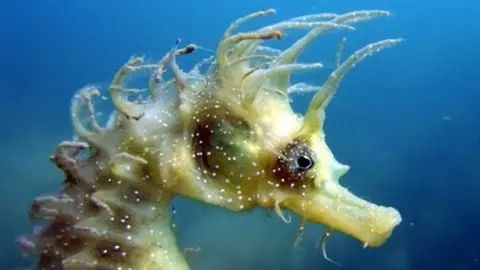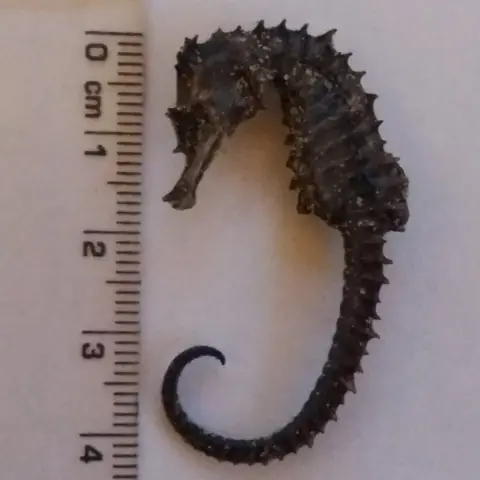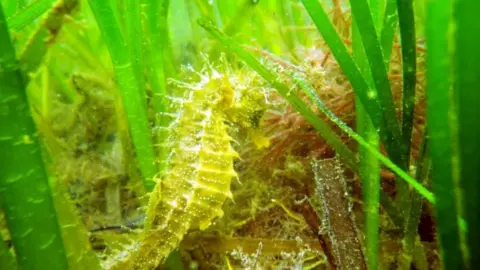Divers fail to find spiny seahorses in Studland Bay
 Seahorse Trust
Seahorse TrustExperienced divers have failed to find any protected seahorses in the seagrass meadows off Dorset where they were once a common sight.
In 2008, about 40 spiny seahorses were recorded in Studland Bay, but none had been spotted there since early 2015 until one was found last summer.
However, dives organised by the Seahorse Trust this year have so far only managed to find a dead one.
A study recently found pollution was damaging UK seagrass.
 Rachael Meade
Rachael Meade"We have covered the whole bay over time and we cannot find any," said Neil Garrick-Maidment, from the trust.
"That is not to say there are none but even with our highly experienced team we cannot find any."
He added a dead female spiny seahorse was discovered in the bay in March.
"It could have been washed up from further up the coast as there is a strong East-West drift in this area," he said.
"It was thoroughly dried so must have been there for a while."
 Seahorse Trust
Seahorse TrustOnly 24 specimens of the UK's spiny and short snouted species were recorded off the UK coast last year.
Both species have been protected under the Wildlife and Countryside Act 1981 since 2008, which prevents them being killed, injured or taken.
The Seahorse Trust and Dorset Wildlife Trust have previously said boat moorings are damaging the seagrass bed habitats at Studland by "dragging and scouring" the seabed.
The bay was previously recommended as a Marine Conservation Zone but not selected.
Mr Garrick-Maidment said a designation for Studland would ensure the future preservation of the seagrass beds and seahorses.
